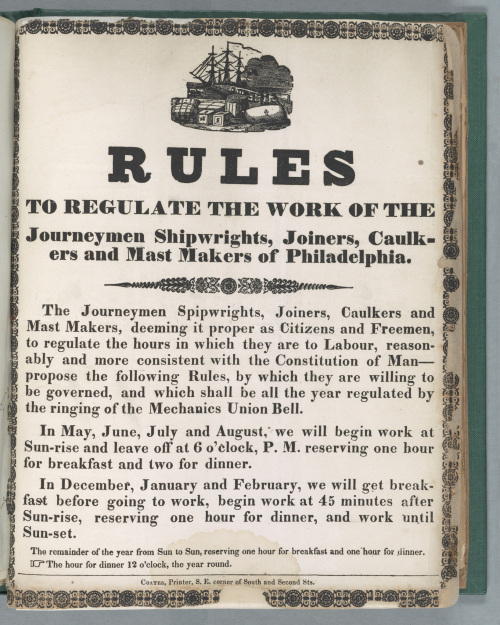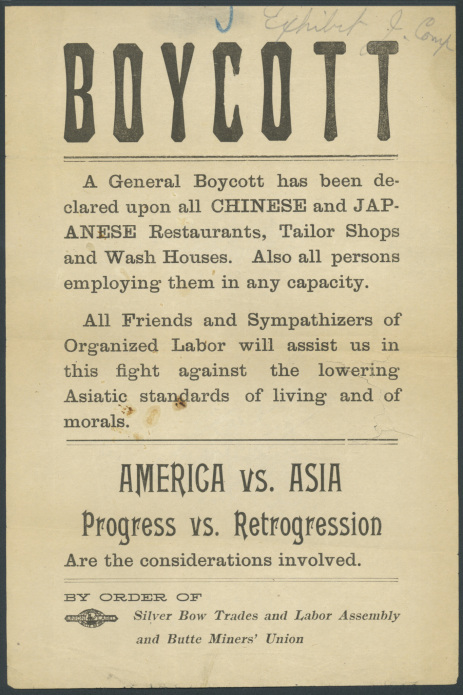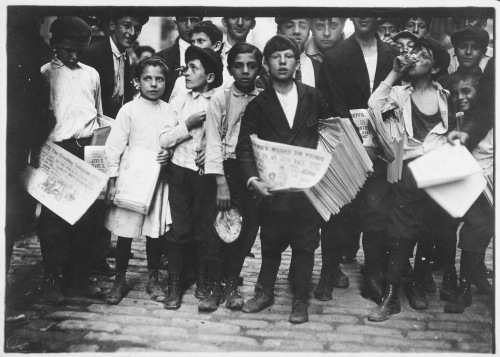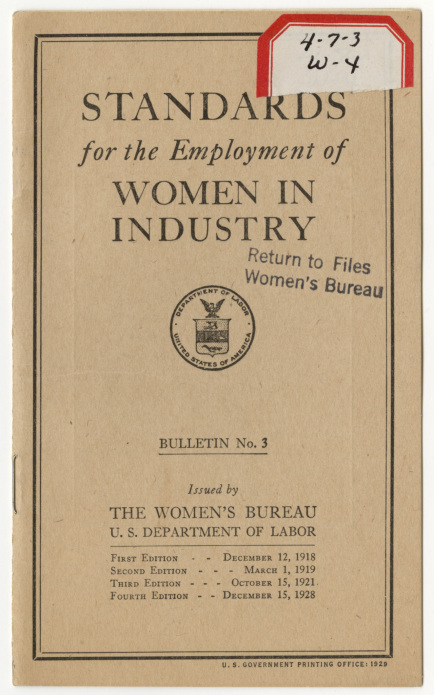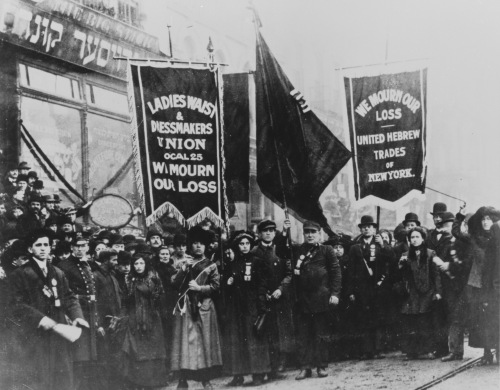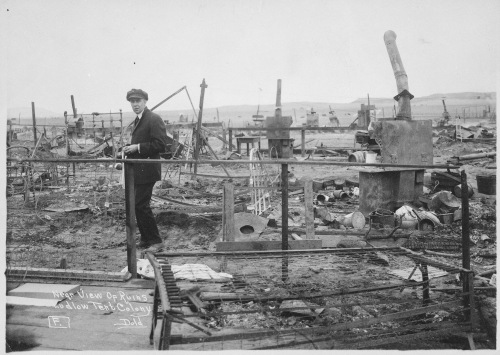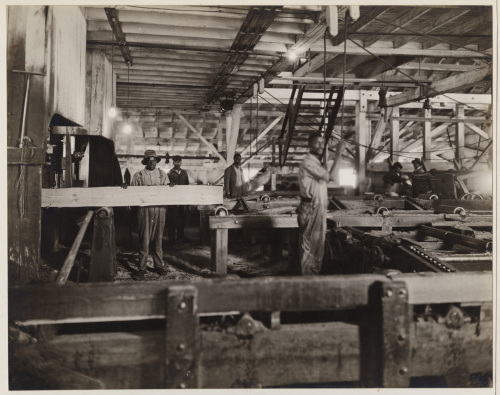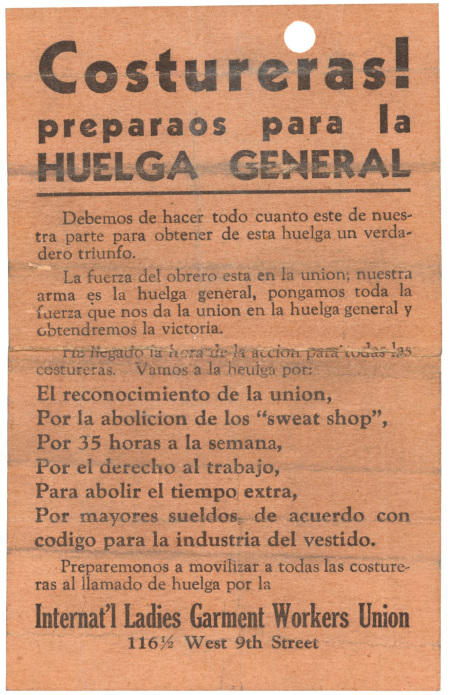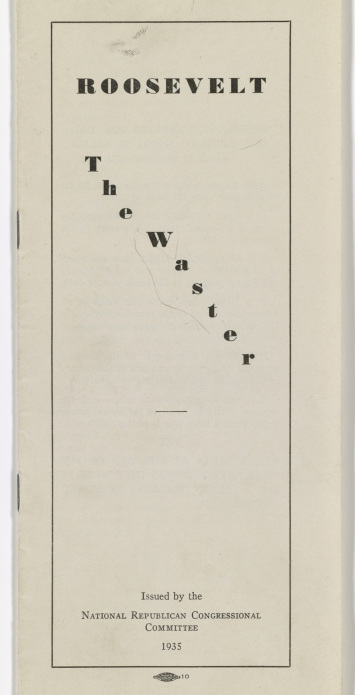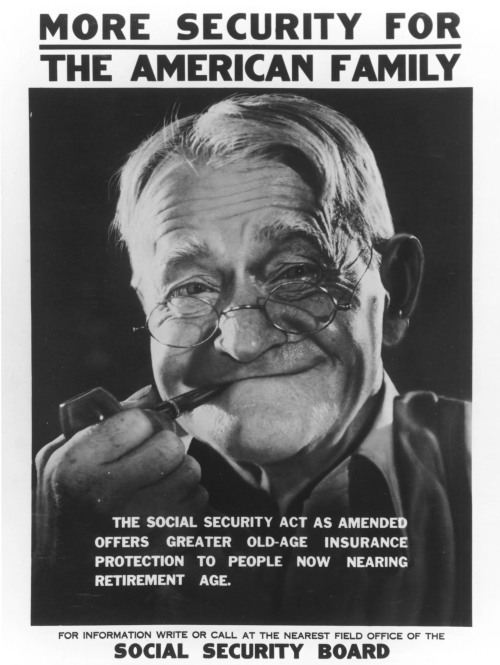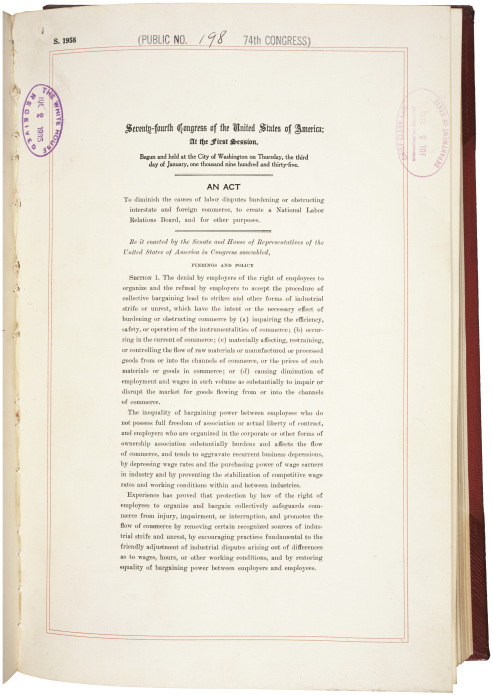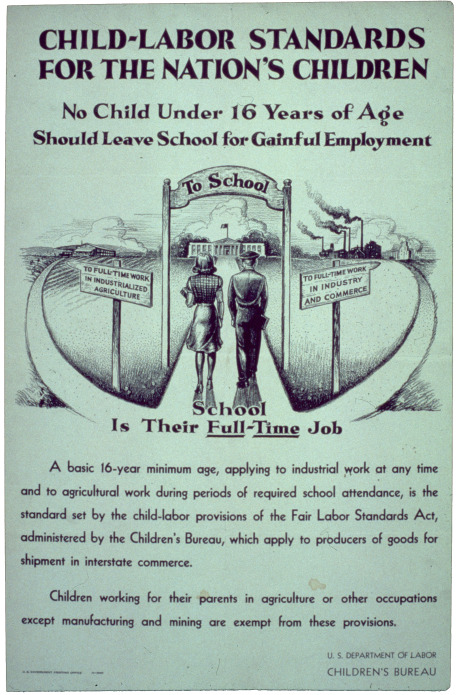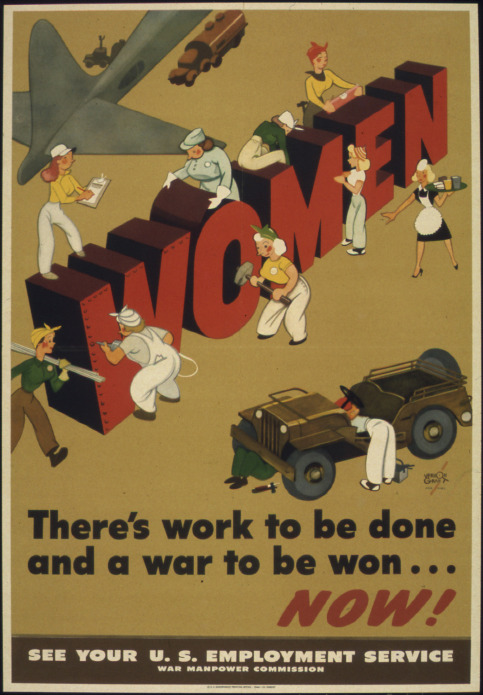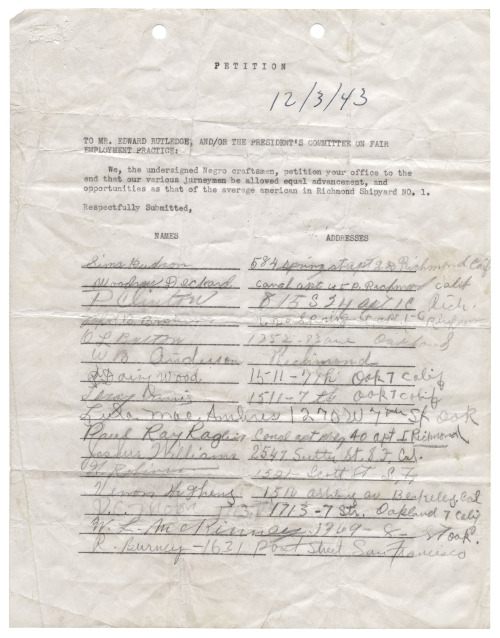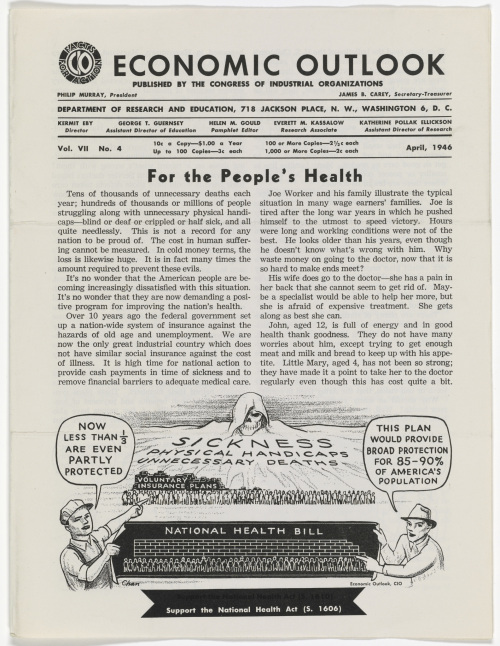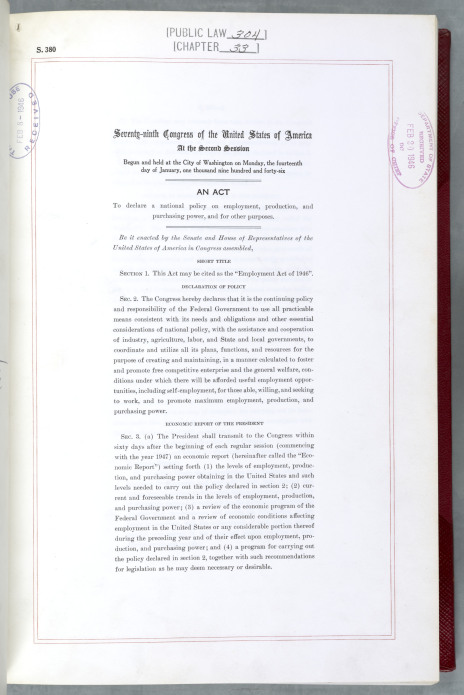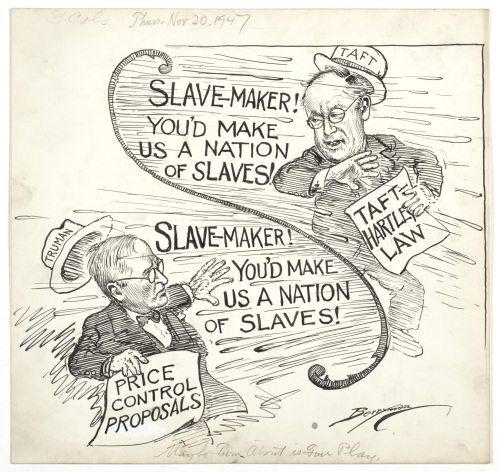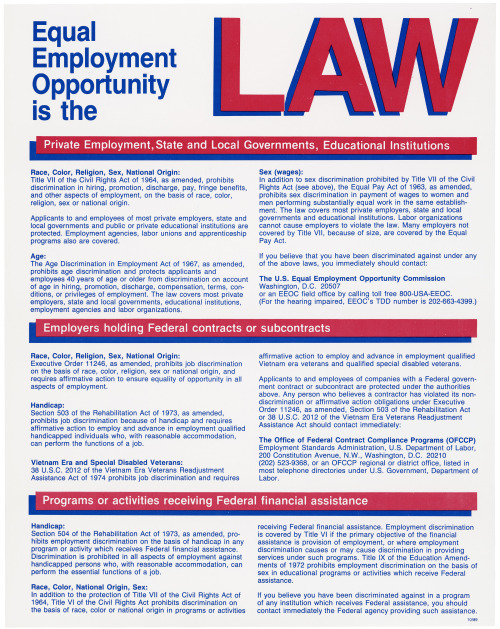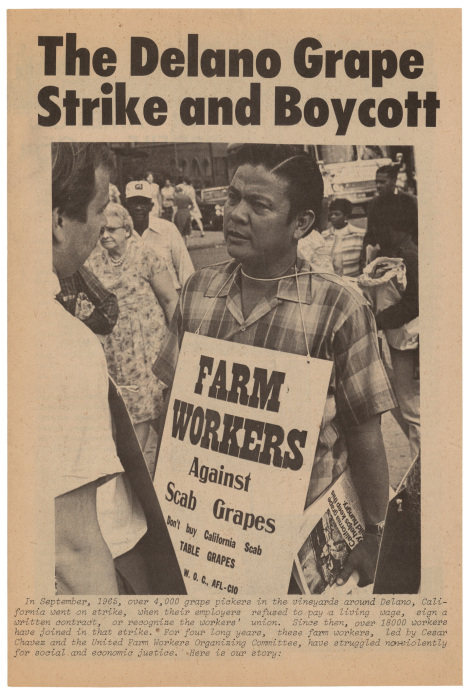Workplace Rights
Workplace Rights
The struggle to define and assert workplace rights has sometimes conflicted with the ideals of a free marketplace, and the rights of employees and employers have often clashed.
THIS SECTION INCLUDES STORIES ABOUT:
- Unions, strikes, and the reactions against them
- Debates about women and children in the workplace
- The Federal Government’s role in providing economic security and rights in the workplace
Chapter one
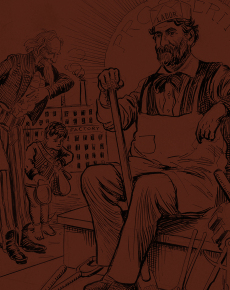
In the late 19th century, the American economy transformed from a predominately agricultural to an industrial one, with increasing numbers of wage workers laboring in factories, mines, and on railroads. Workers organized and struck for higher wages, safer conditions, and shorter hours. Employers responded with lockouts, the hiring of replacement of workers, and legal action. Violence was common.
The Depression of 1893 1893–1897
The Progressive Era 1900–1920
Chapter two
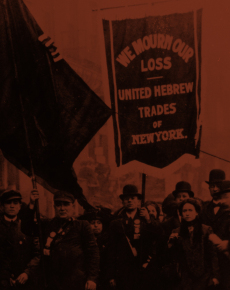
In the early 20th century, workers, businesses, and government all tried to adapt to an economy that was becoming increasingly urban and industrial. The Progressive Era saw an upsurge of labor unrest, as well as proposals and laws to alleviate the worst abuses of industrial capitalism. Additional proposals were put forward during the 1920s, but fewer were enacted.
The Great Depression 1929–1941
Chapter three
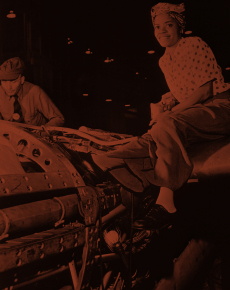
The Great Depression was a time of poverty and unemployment, but World War II expanded economic opportunities, especially for women and African Americans. Depression and war both brought clashes between business and labor that resulted in new Federal Government regulations and laws, and an upsurge in union membership.
The New Deal 1933–1941
World War II 1941–1945
Chapter four

After World War II, the United States experienced a dramatic economic expansion. Workers’ incomes rose, and prosperity became more widespread. The growth of organized labor peaked, but after a wave of postwar strikes, new laws and a hostile political environment made organizing employees more difficult, especially after the mid-1950s.
Civil Rights Revolutions 1960–1989
Chapter five
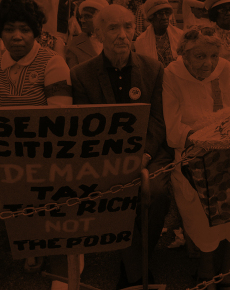
The African American civil rights movement brought about anti-discriminatory legal protections for blacks and inspired movements for civil rights among other groups. In the workplace, activism brought protections for individuals and increased government regulation. These directions expanded until the later 1970s with the renewed enthusiasm for free market solutions and deregulation.
What about contemporary Issues?
Most of the records in "Records of Rights" were created before 1980 because the National Archives generally receives permanent records when they are 30 years old or older. Prior to that, they are maintained by the federal agency that created them.


